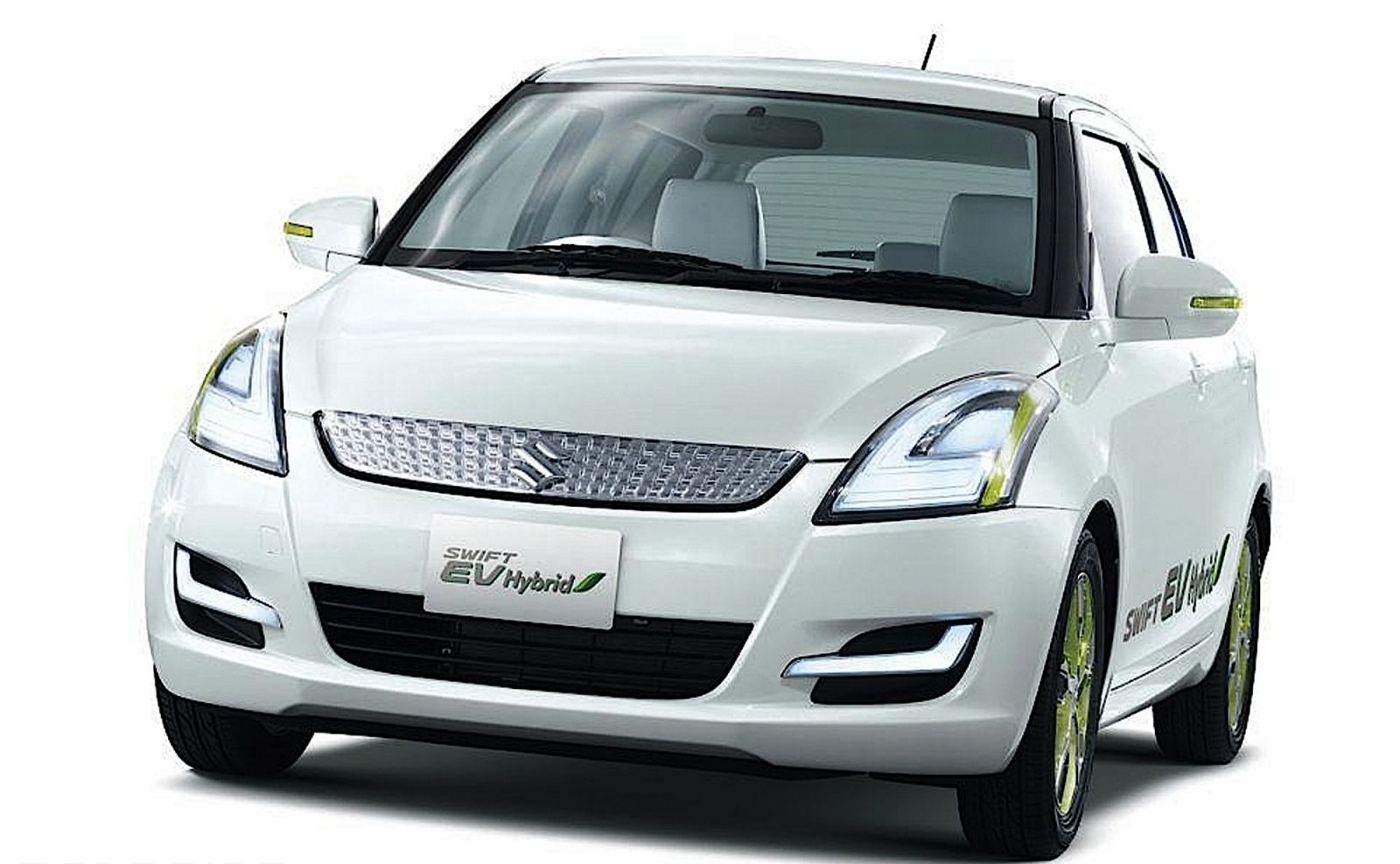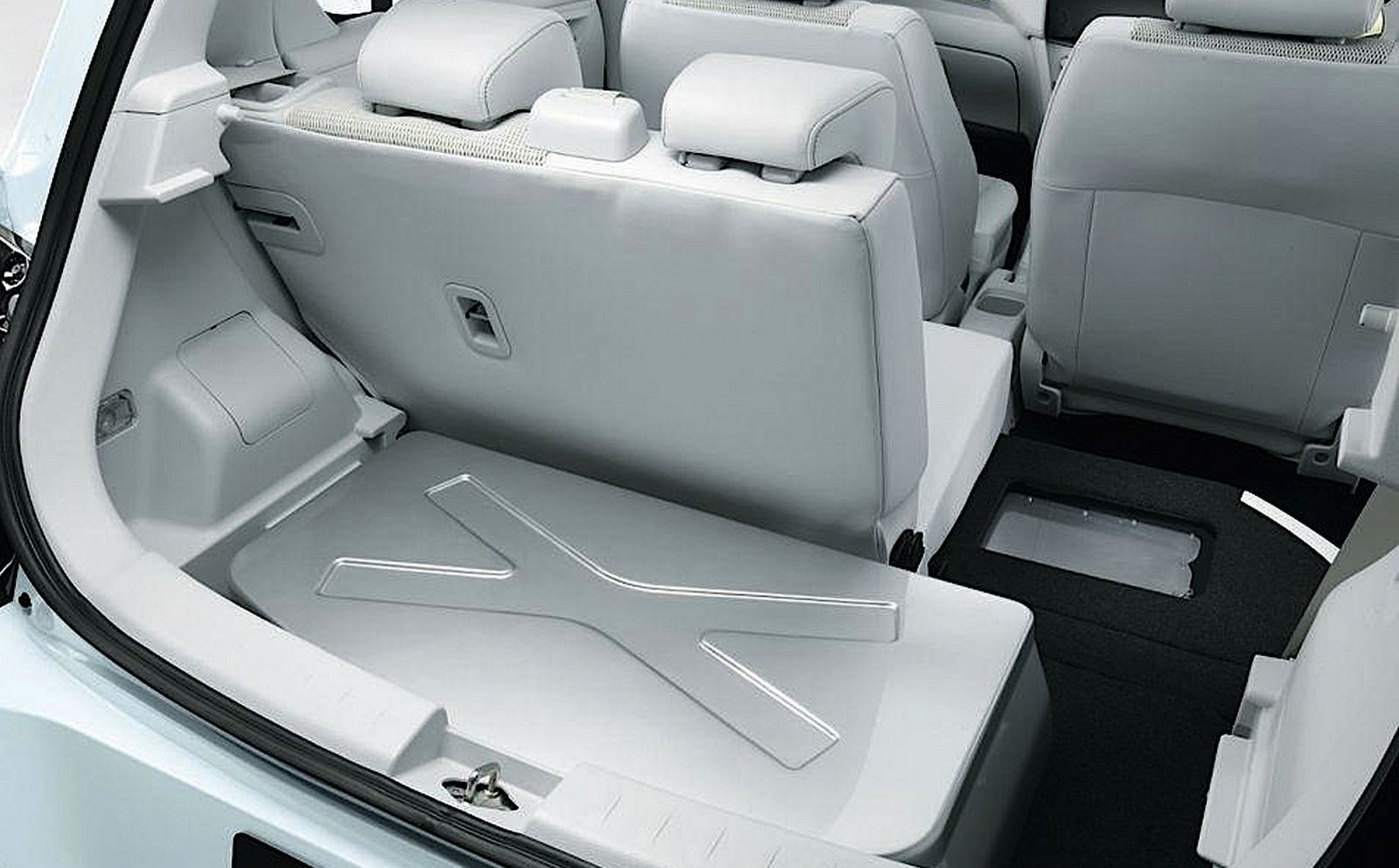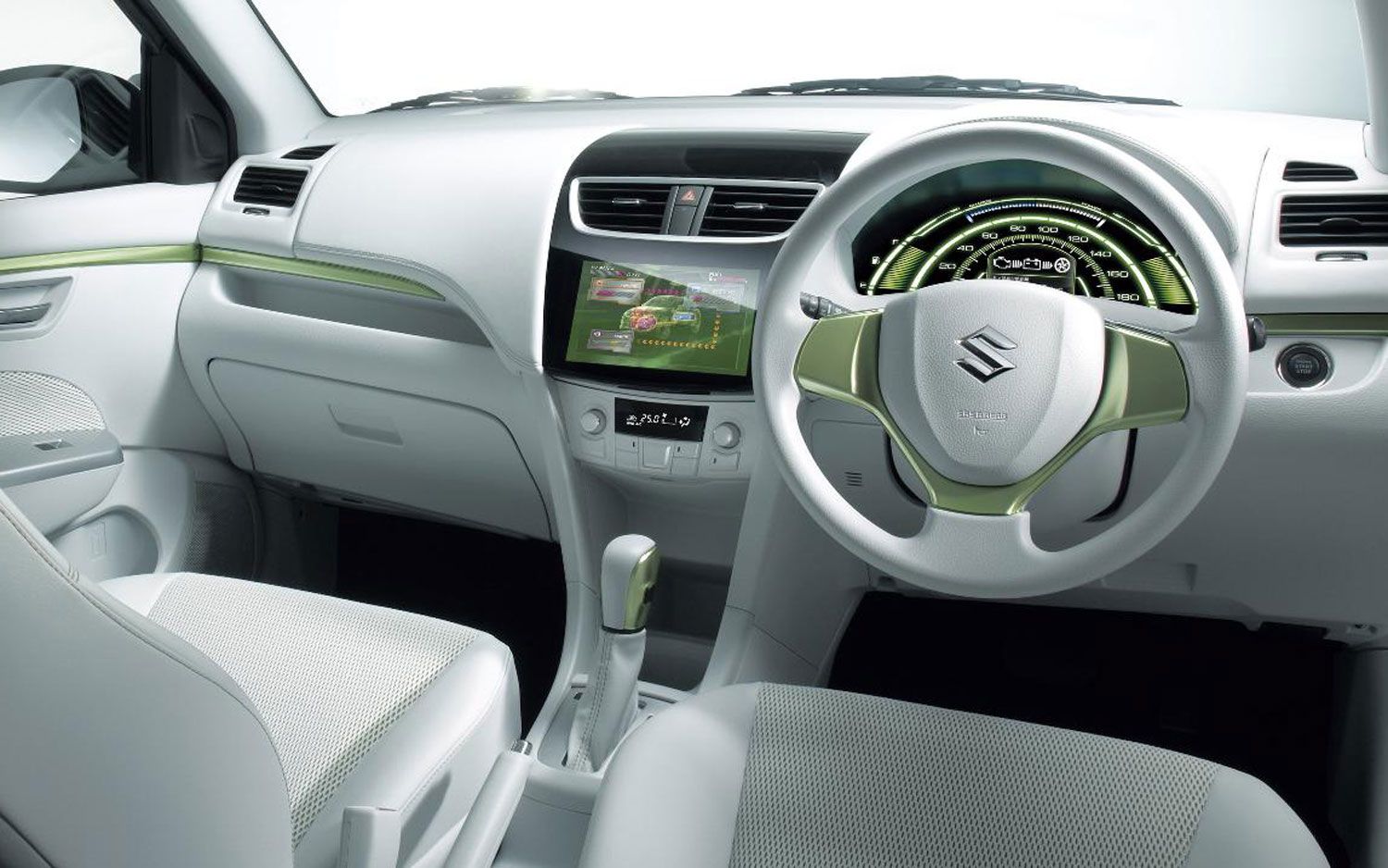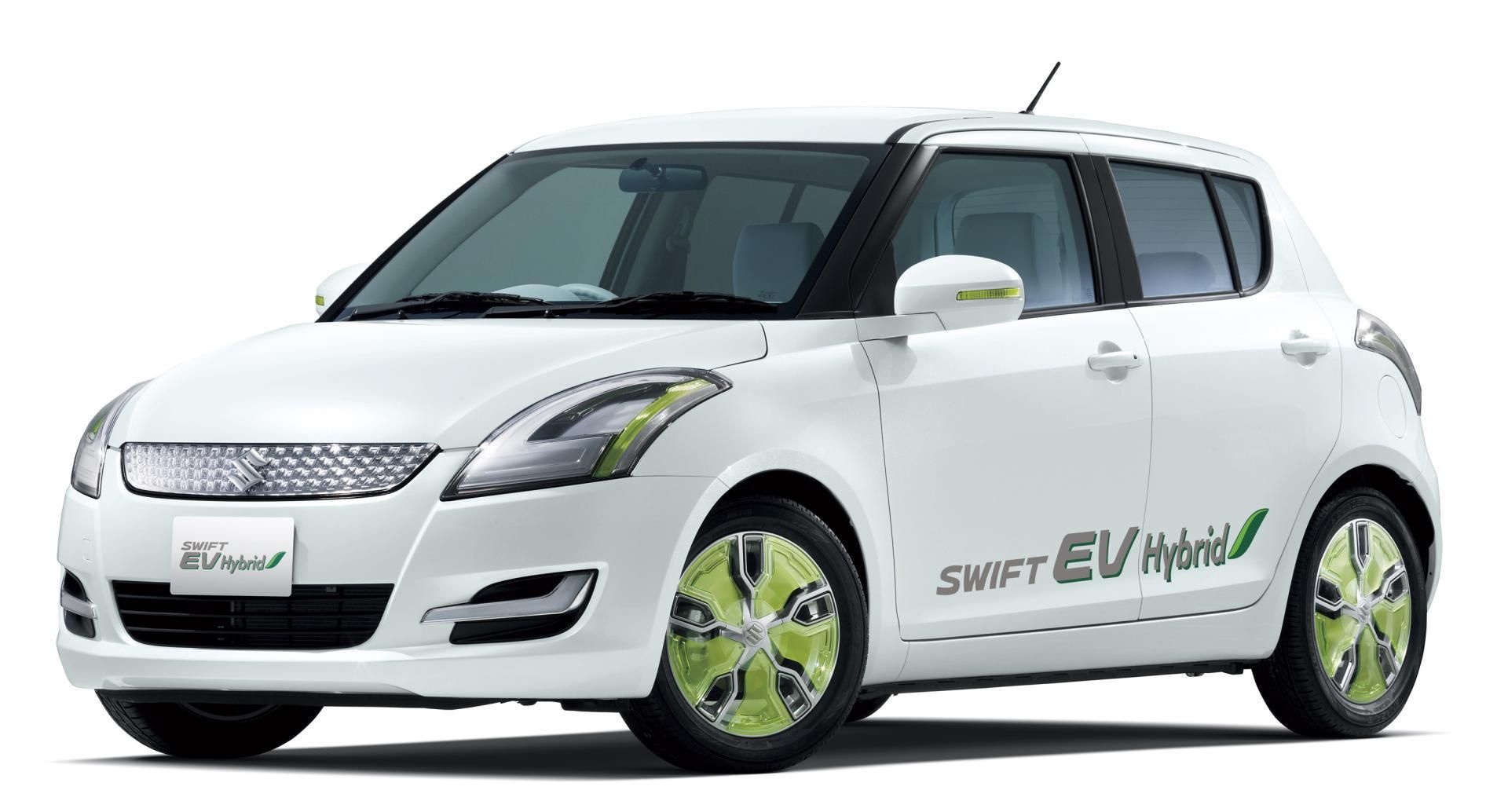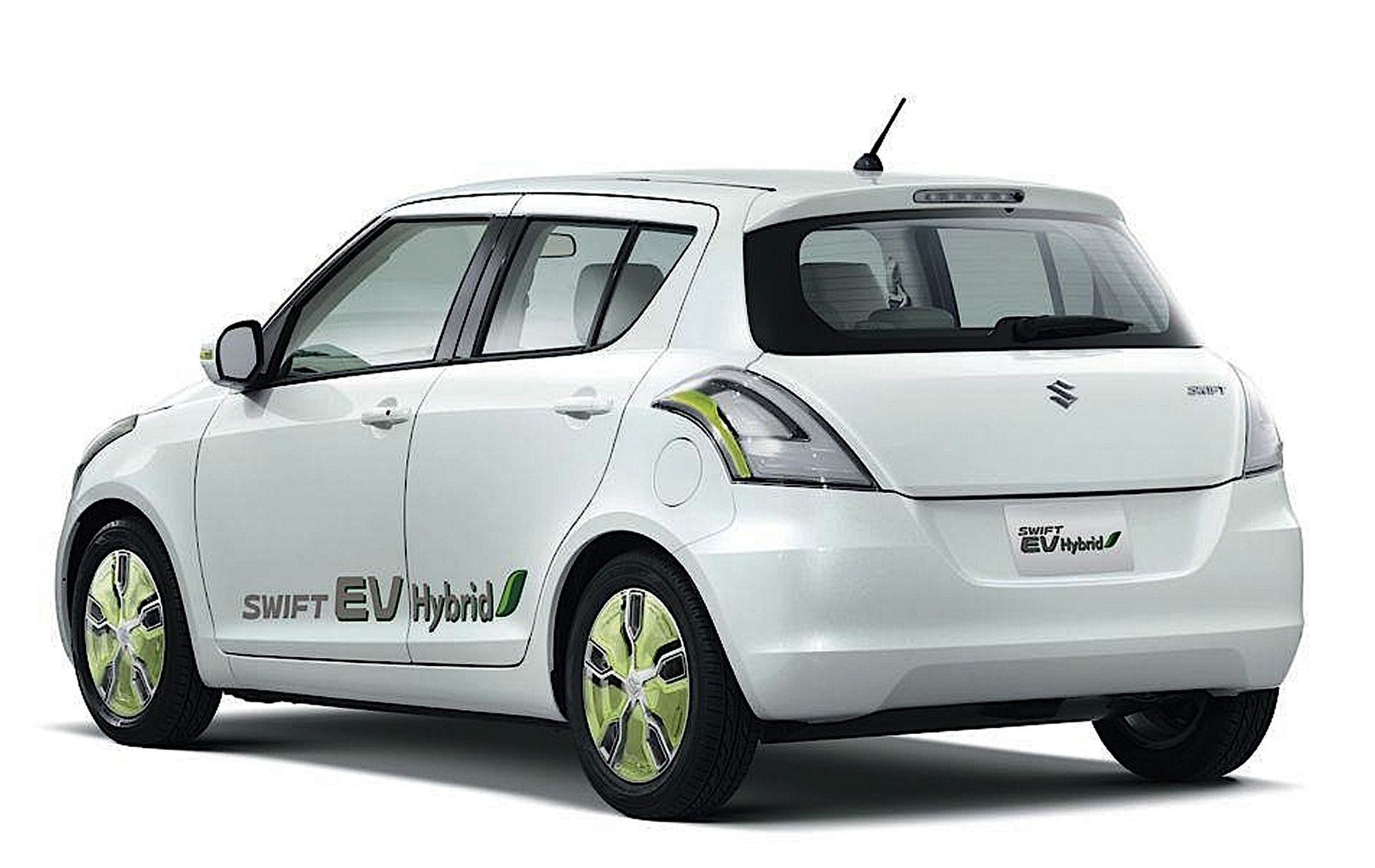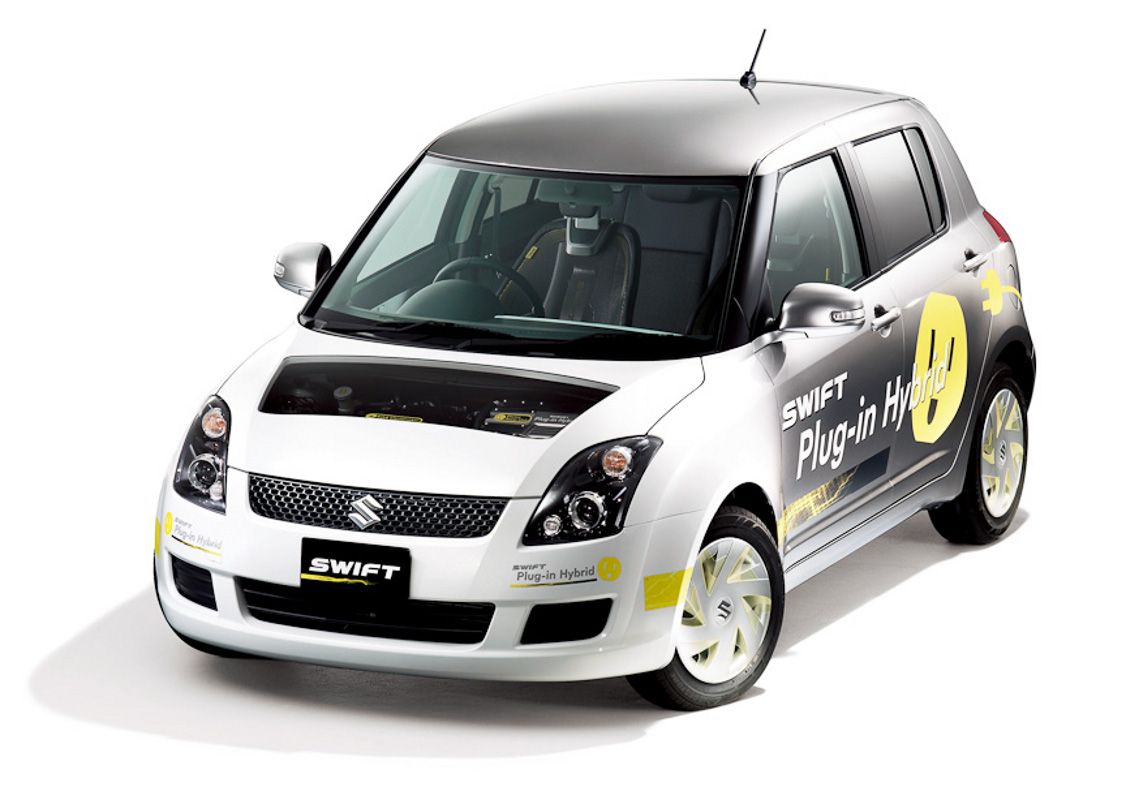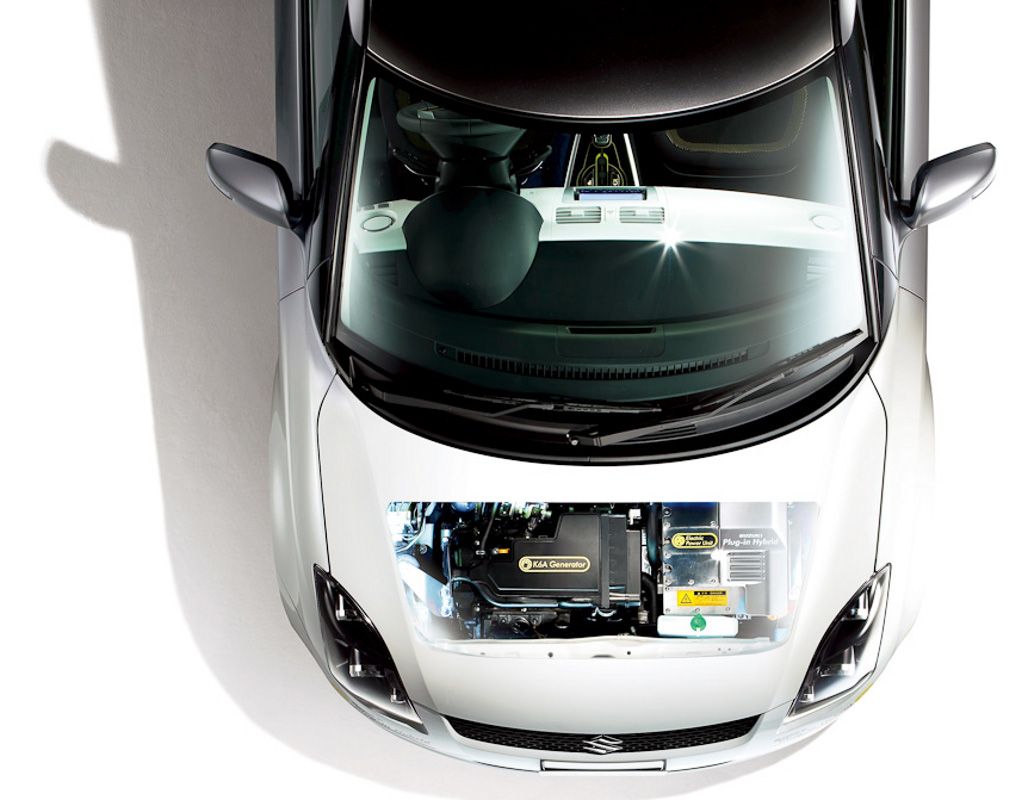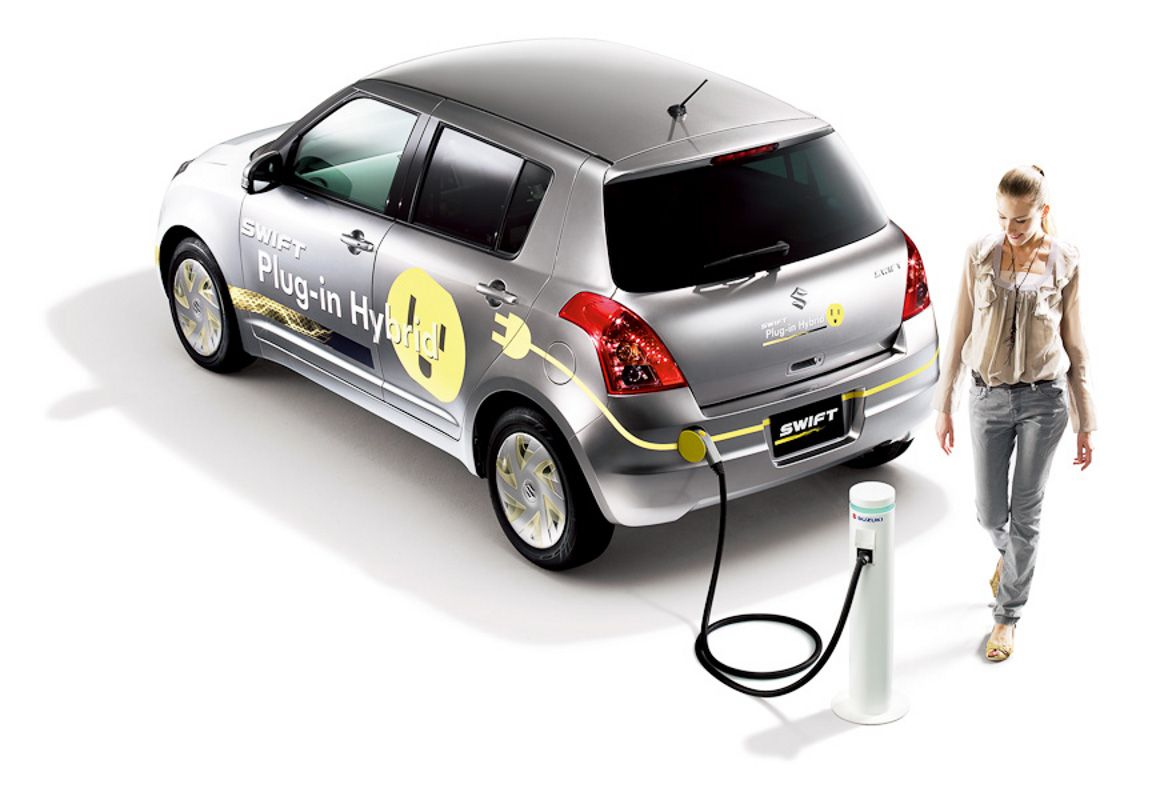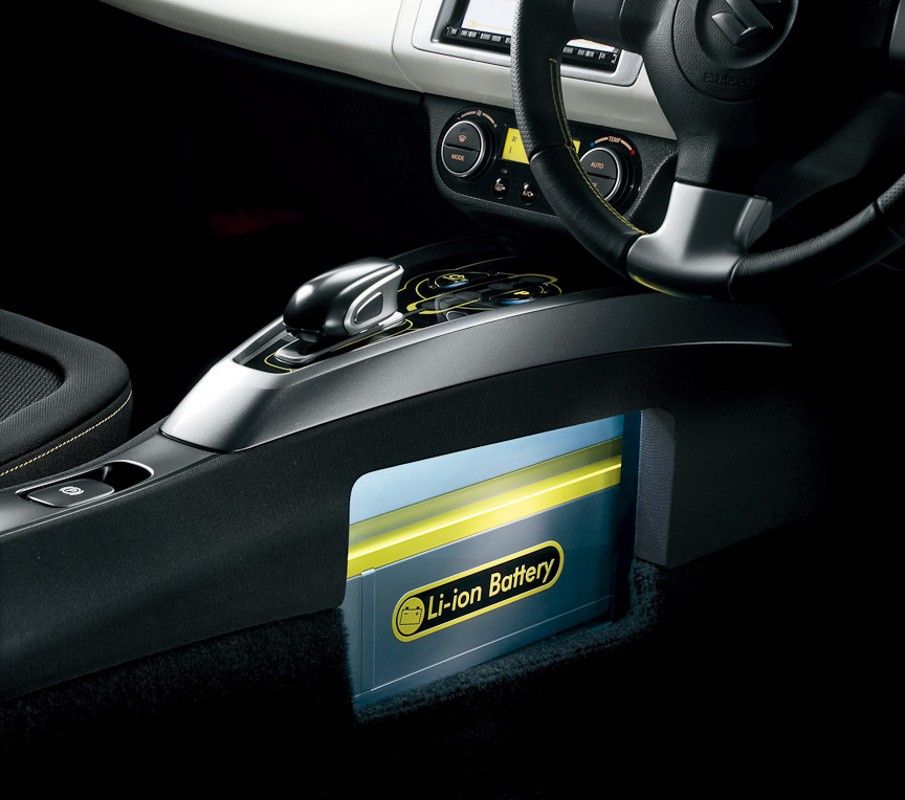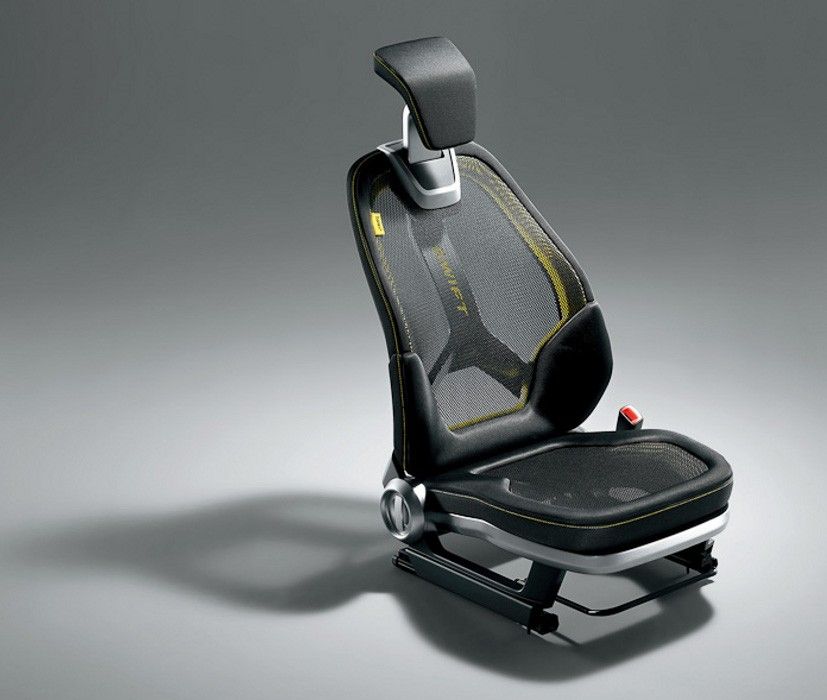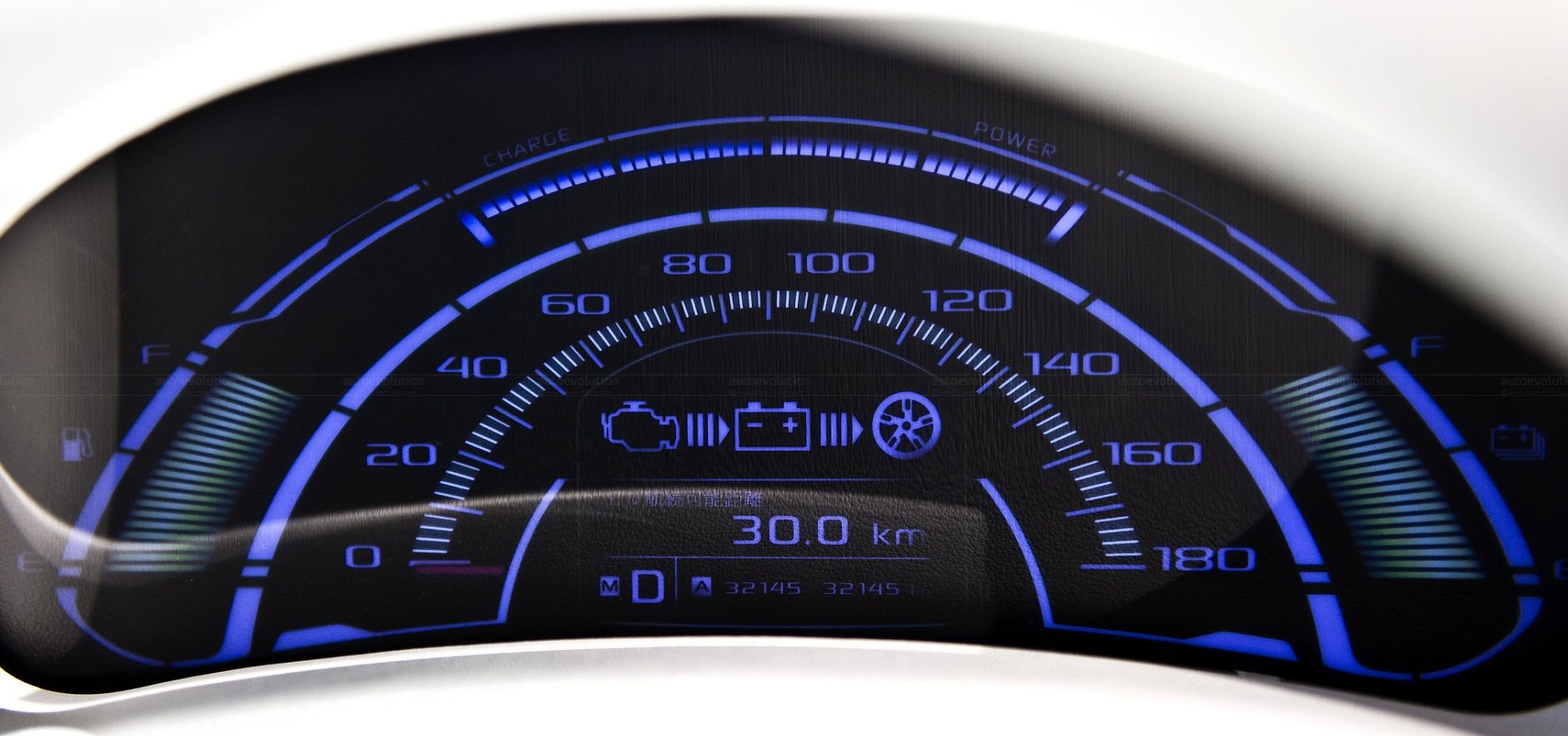Until now Suzuki->ke87 didn’t launch any hybrid on the market, but in the latest years has presented a few green concepts which prove us that they conduct serious researches on this type of technologies.
One of the most anticipated models is the Swift Hybrid, presented in its concept stage at the Tokyo Auto Show in 2009. After two years the concept was presented again to the public, but this time it came with a series of modifications, being closer to the production version.
Like its predecessor the 2011 concept was based on the conventionally powered Swift model, but it come with a few different elements which gave it a unique character.
Under the hood the 2011 Suzuki Swift->ke87 EV Hybrid was equipped with the same 660 cc engine and the 54 kW motor found at its predecessor, but this time the hybrid system offered a higher range.
Apart from the reworked drive train, the entire exterior has been also modified. More changes were made inside were the car get a new color scheme and a futuristic instrument panel.
2011 Suzuki Swift EV Hybrid
- Make: Array
- Model: 2011 Suzuki Swift EV Hybrid
2013 Kia Optima "Batmobile"
- Make: Array
- Model: 2013 Kia Optima "Batmobile"
- Engine/Motor: inline-4
- Horsepower: 275 @ 6000
- Torque: 269 @ 1750
- [do not use] Vehicle Model: Array
Design and interior
Overall the Suzuki->ke87 Swift EV Hybrid looks pretty similar with the standard model, but male a closer inspection and you’ll be able to spot a lot of differences, which set it apart from its sibling.
The most obvious modification made to the Suzuki Swift EV Hybrid is represented by the new headlights which are now fitted with LEDs giving the entire car a slightly more upscale look. The grille continues to have the same design and proportions, but it comes with a clean metallic paint.
Other modifications were made to the fog lamp housings which are now decorated with an “L” shaped bar, helping the car get one step closer to the modern standards. We also like the custom alloy wheels which come with a tasty green trim evoking the efficient nature of the Suzuki Swift EV Hybrid.
The green concept keeps the same blacked-out pillars found at its brother, as well as a similar rear end design. Like the front headlights, the taillights were also fitted with LEDs to further enhance the modern style of the car.
Suzuki didn’t resume to only exterior modifications as the interior has also received a few tweaks to make it better suited for the “green” character of the vehicle.
Though, don’t expect too many interior modifications as they are limited to a new instrument cluster and a white color scheme for the dashboard and seats. Also, the grey accents found at the standard model are now painted in green.
The entire dashboard keeps the same design as the base model, but the center stack is fitted with a new LCD screen which displays various infos about the hybrid system.
Apart from these modifications, the cabin continues to be as comfortable as the one from the standard Swift, offering a decent driving position and a good all-around visibility. The Swift’s rear seats however, were never our first choice when it comes to comfort and leg-room. Though, it’s worth to be mentioned that the hybrid system didn’t affect the cabin’s space and but some boot volume had to be sacrificed.
Engines and technologies
The 2010 concept is based on the previous Swift EV concept presented in 2009. The old EV was fitted with a 658 cc engine which develops 54 hp, working in tandem with a 74 hp electric motor powered by lithium ion batteries.
As the electric motor reached its maximum torque at 0 revs, there is no need for a conventional geared transmission. This made possible to fit the lithium ion batteries in the center console where a car’s transmission would typically be.
Like the Chevrolet Volt, the Swift EV does not use the petrol engine for propulsion, but instead it’s used to recharge the onboard batteries after the energy obtained via external sockets is depleted. The combustion engine was able to give you an extra range of 20 km.
On the other hand, the Swift EV concept presented in 2010 keeps the same components as its predecessor, but it received a few tweaks which increased the extra range offered by the combustion engine up to 30 km. A full recharge time takes only 90 minutes on a 200V outlet, while using a 100V supply raises the time to four hours.
Compared to the old concept, the new one also sports a smaller and lighter battery pack which can be charged quicker, weights less and uses fewer resources.
Verdict
Suzuki will launch its Swift Hybrid in 2013 and the vehicle is intended to be an affordable hybrid for masses. For the moment we don’t have any price specification but according to some rumors the Hybrid will cost $600 more than the base model.
However the main disadvantage is that the car’s range is pretty limited, as even with the extra punch given by the combustion engine would be able to run only 50 or 60 km. This means that you should limit to only small drives around the city as any longer journey will be pretty stressful or even impossible.


